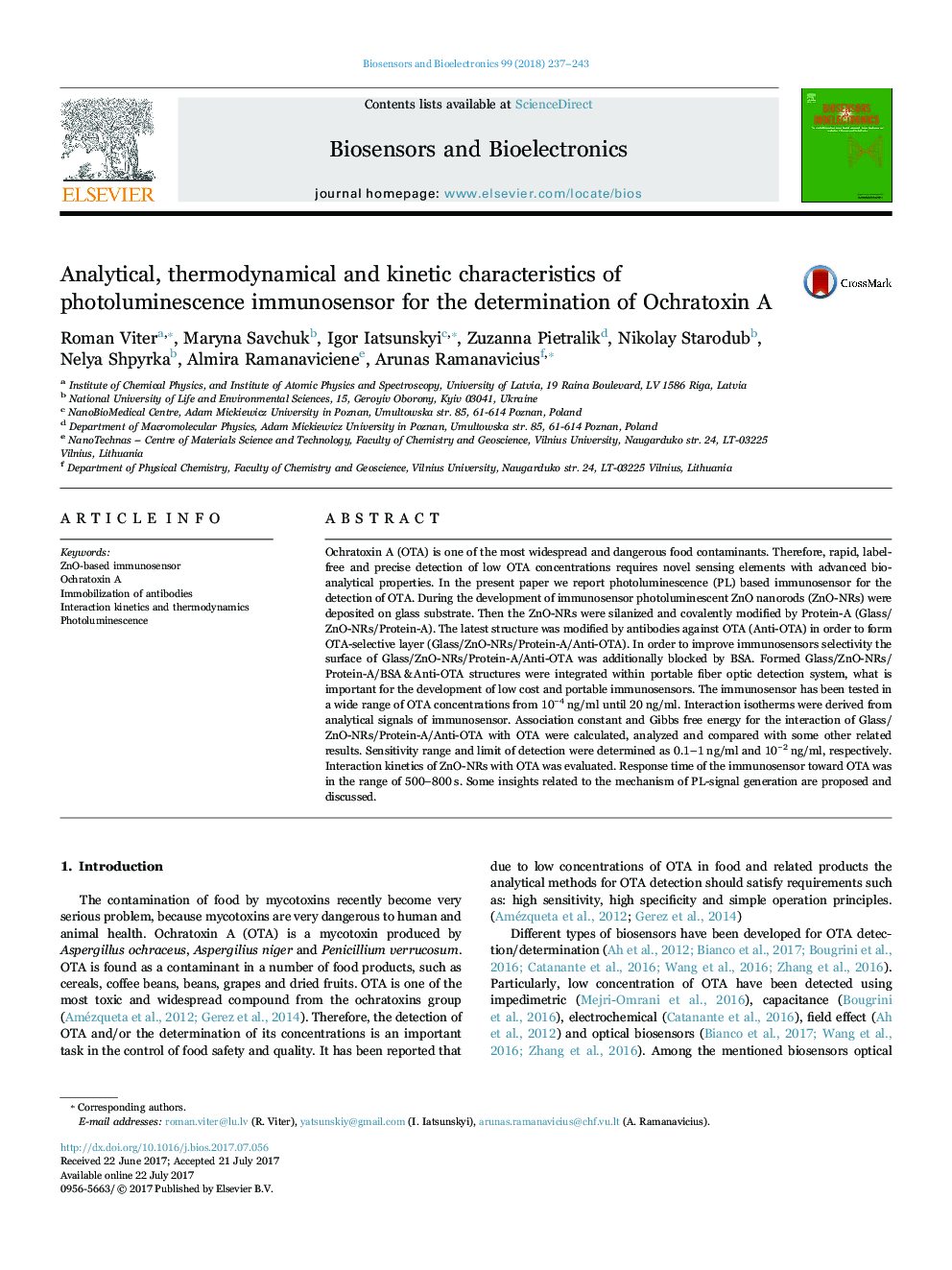| Article ID | Journal | Published Year | Pages | File Type |
|---|---|---|---|---|
| 5031334 | Biosensors and Bioelectronics | 2018 | 7 Pages |
â¢Photoluminescence (PL) immunosensor for the determination of Ochratoxin A (OTA).â¢PL immunosensor is based on of ZnO nanorods (ZnO-NRs).â¢OTA-selective layer (ZnO-NRs/anti-OTA) is based on antibody against OTA (anti-OTA).â¢Association constant and ÎG for anti-OTA and OTA interaction were calculated.â¢PL-based immunosensor was integrated within portable fiber optic detection system.
Ochratoxin A (OTA) is one of the most widespread and dangerous food contaminants. Therefore, rapid, label-free and precise detection of low OTA concentrations requires novel sensing elements with advanced bio-analytical properties. In the present paper we report photoluminescence (PL) based immunosensor for the detection of OTA. During the development of immunosensor photoluminescent ZnO nanorods (ZnO-NRs) were deposited on glass substrate. Then the ZnO-NRs were silanized and covalently modified by Protein-A (Glass/ZnO-NRs/Protein-A). The latest structure was modified by antibodies against OTA (Anti-OTA) in order to form OTA-selective layer (Glass/ZnO-NRs/Protein-A/Anti-OTA). In order to improve immunosensors selectivity the surface of Glass/ZnO-NRs/Protein-A/Anti-OTA was additionally blocked by BSA. Formed Glass/ZnO-NRs/Protein-A/BSA&Anti-OTA structures were integrated within portable fiber optic detection system, what is important for the development of low cost and portable immunosensors. The immunosensor has been tested in a wide range of OTA concentrations from 10â4Â ng/ml until 20Â ng/ml. Interaction isotherms were derived from analytical signals of immunosensor. Association constant and Gibbs free energy for the interaction of Glass/ZnO-NRs/Protein-A/Anti-OTA with OTA were calculated, analyzed and compared with some other related results. Sensitivity range and limit of detection were determined as 0.1-1Â ng/ml and 10â2Â ng/ml, respectively. Interaction kinetics of ZnO-NRs with OTA was evaluated. Response time of the immunosensor toward OTA was in the range of 500-800Â s. Some insights related to the mechanism of PL-signal generation are proposed and discussed.
Graphical abstractDownload high-res image (160KB)Download full-size image
